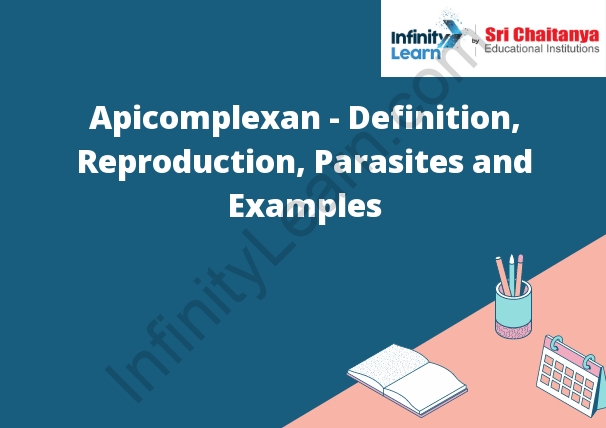Table of Contents
What is Apicomplexan Protozoa ?
Apicomplexan protozoa are a group of parasite protozoa that are responsible for some of the most serious human diseases, including malaria, toxoplasmosis, and cryptosporidiosis. Major parasites under apicomplexan protozoa include Plasmodium falciparum, the cause of malaria, Toxoplasma gondii, the cause of toxoplasmosis, and Cryptosporidium parvum, the cause of cryptosporidiosis.
Major Parasites Under Apicomplexan Protozoa:

Reproduction in Apicomplexa
The asexual-reproduction of apicomplexans is known as schizogony. Schizogony is the process by which a single parasite cell divides by mitosis to produce two daughter cells. These daughter cells then divide by mitosis to produce four daughter cells, and so on. This process produces a large number of genetically identical daughter cells, all of which are capable of invading new cells and initiating another infection.
The sexual-reproduction of apicomplexans is known as gametogony. Gametogony is the process by which a single parasite cell produces two different types of sex cells, called gametes. These gametes fuse together to form a new parasite cell, which can then invade new cells and initiate another infection.
Gametogony
Gametogenesis is the process of producing gametes, male and female sex cells. In animals, gametogenesis occurs in the gonads, the testes in males and the ovaries in females. The process begins with the production of diploid cells called primary spermatocytes and primary oocytes. These cells undergo meiosis, a process of cell division that produces four haploid cells, or gametes. In males, the gametes are sperm cells. In females, the gametes are egg cells.
Merogony
Merogony is a process of reproduction in which a new organism is formed from the combination of two cells. One of the cells is called the ovum, or egg, and the other is called the sperm.
Sporogony
Sporogony is the process in which a parasitic protozoan reproduces asexually in a host. The process begins when the protozoan attaches to the host’s intestinal lining. The protozoan then multiplies by binary fission, and eventually forms spores. The spores are released from the host’s body and can infect other hosts.
Gregarines
Gregarines are a type of protozoan parasite that affects the intestines of many different kinds of animals, including humans. They are typically transmitted through ingestion of fecal matter, which can occur through contact with contaminated surfaces, food, or water, or through contact with an infected person or animal. Once ingested, the gregarines attach themselves to the intestinal wall and begin to feed on the host’s blood. Symptoms of gregarine infection can include diarrhea, abdominal pain, nausea, and vomiting. In severe cases, the infection can lead to death. Treatment for gregarine infection typically involves the use of antibiotics.
Coccidians
Coccidians are a type of protozoan that lives in the intestinal tract of animals.
There are many different species of coccidians, and they can cause a variety of diseases in their hosts, ranging from mild diarrhea to life-threatening conditions.
Coccidians are spread through contact with infected feces, and they can also be transmitted through food and water.
They are most commonly found in developing countries where sanitation and hygiene are poor.
Coccidians are treated with antiprotozoal drugs.
Prevention of coccidiosis is through improved hygiene and sanitation.
Haemosporidia
Haemosporidia are a group of protozoan parasites that cause malaria in humans.
Haemosporidia are a group of protozoan parasites that cause malaria in humans. The parasites are spread by the bite of an infected mosquito. The most common type of malaria is caused by the parasite Plasmodium falciparum. Symptoms of malaria include fever, chills, and headache. Treatment of malaria depends on the type of parasite causing the infection.
Marosporida
Marosporida is a group of marine amoebae.
The group was circumscribed in 2006 by Cavalier-Smith “et al.” on the basis of molecular phylogeny. The type genus is “Marospora”.
The following families are currently recognised in the group:









